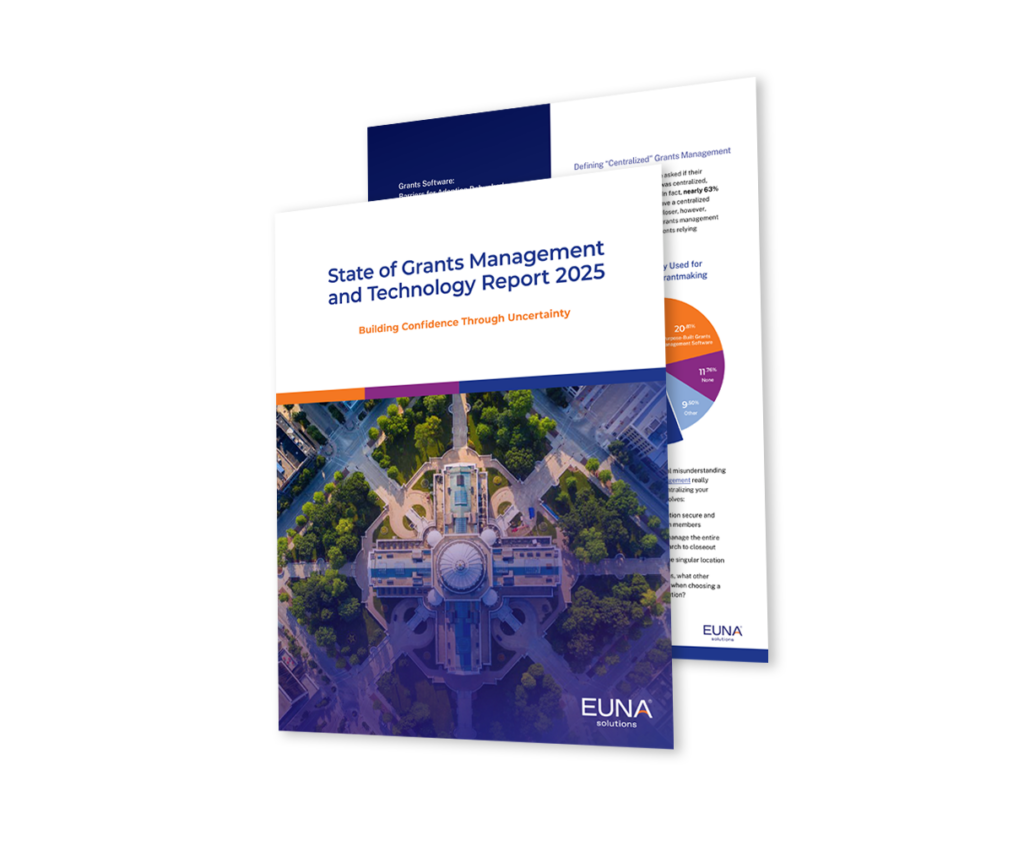In today’s dynamic landscape, procurement teams are presented with a remarkable opportunity to drive change and innovation. Recently, we held a webinar in partnership with NIGP where we discussed the strategies and community connections procurement professionals can harness to handle the complexities hitting their desks, specifically what was discussed in our annual State of Public Procurement report. In this blog, we’ll cover the core themes discussed in the webinar so that you can start actioning an innovative approach today.
Embracing Innovation and Risk Management
Procurement teams can seek out innovative solutions that enhance their tech stack while remaining vigilant about associated risks. By actively participating in industry forums, conferences, and professional networks, these teams can share insights and learn effective strategies for technology adoption. This is not just about keeping up; it’s about leading.
One shining example is the “AI in Public Procurement” community, formed under the leadership of NIGP. Created as a collaborative space, this community allows procurement professionals to exchange ideas about leveraging artificial intelligence for procurement optimization. The initiative serves as a crucial support framework, equipping members with the tools they need to navigate AI confidently.
With the increasing adoption of AI, members gain insights that help them maintain their competitive edge, understand the full spectrum of risks and rewards that AI implementation presents, and ultimately drive innovation through knowledge-sharing and collaboration. With over 264 members and counting, this initiative exemplifies how procurement professionals can work together to thoughtfully implement new tools, allowing them to remain at the forefront of their field.
Realizing Strategic Outcomes
Many organizations have historically found themselves in a reactive mode, responding to changes as they occur rather than strategically planning for the future. However, this is changing. As procurement networks grow and the demand for transparency and demonstrable results increases, there’s now a distinctive shift toward proactive strategy formulation. The key to connecting current processes to strategic outcomes lies in adopting Network-Powered Procurement.
By promoting knowledge sharing and enhancing collaboration, procurement teams can uncover new ways to benefit their communities and effect positive change. Public procurement plays a pivotal role in this setup, enabling strategic outcomes that align with broader societal goals such as increasing affordable housing, enhancing broadband access, and improving transportation infrastructure.
Depending on their jurisdiction, project specifics, or the parameters of their funding, procurement teams can direct their initiatives toward diverse areas like sustainability or local purchasing. The strength of collaboration—both with suppliers and within the public procurement community—profoundly influences the meaningful results organizations can achieve.
Innovative Procurement Approaches
Let’s delve into two innovative procurement methodologies procurement teams can adopt to begin transforming their approach: challenge-based procurement and outcome-based contracting.
Challenge-based procurement pivots the focus from merely asking suppliers to provide solutions to addressing specific challenges head-on. This method empowers suppliers to take the lead, leveraging their expertise to propose innovative solutions. For instance, consider a local government grappling with the heat of urban environments. Instead of dictating solutions, they could launch a challenge statement, inviting suppliers to pitch various ideas such as creating green spaces or employing heat-resistant materials.
On the other hand, outcome-based contracting emphasizes results. This approach requires procurement teams to define clear expectations and measurable outcomes within contracts, holding suppliers accountable for their performance. Continuing with our previous example, if the local government opts for green spaces, they can incorporate sustainability goals directly into the contract. By stipulating commitments like including drought-resistant plants or capturing specific gallons of storm runoff, procurement teams can ensure that their projects align with their broader strategic objectives.
Building a Thriving Community and Network
At the heart of successful procurement lies the understanding that communities thrive when individuals collaborate. This concept is the essence of network-powered procurement, allowing procurement professionals to share insights, best practices, resources, and strategies. Such collaboration not only streamlines processes but enhances outcomes—especially critical in uncertain times.
Many procurement teams have begun to embrace this collaborative spirit, with statistics indicating that 54% of respondents collaborate with fellow procurement professionals on a monthly or weekly basis. A further 79% of professionals have rated inter-agency collaboration as useful or very useful, highlighting the recognized value of peer collaboration. Interestingly, organizations find significant advantages in cooperative and piggyback contracts, peer RFx templates, and insights gathered across various procurement teams.
Nurturing connections with both peers and suppliers is an invaluable asset for public procurement, particularly as teams face increasingly unpredictable environments. A full cycle, network-powered procurement process enhances each phase—from identifying needs to processing invoices—organizing every step for optimal efficiency.
To illustrate the impact, agencies lose an estimated 3-4% of their spend due to transaction costs, inefficiency, and noncompliance. By utilizing a full cycle solution, from sourcing to invoicing, and strengthening connections among teams, stakeholders, and suppliers, procurement can mitigate waste and maximize resource utilization.
Consider your network as a city; just as a grid powers connectivity among various sections, a comprehensive procurement strategy facilitates connections that can lead to unprecedented efficiencies.
Want to learn more about this full-cycle, network-powered procurement approach? Watch our on-demand webinar with NIGP!

